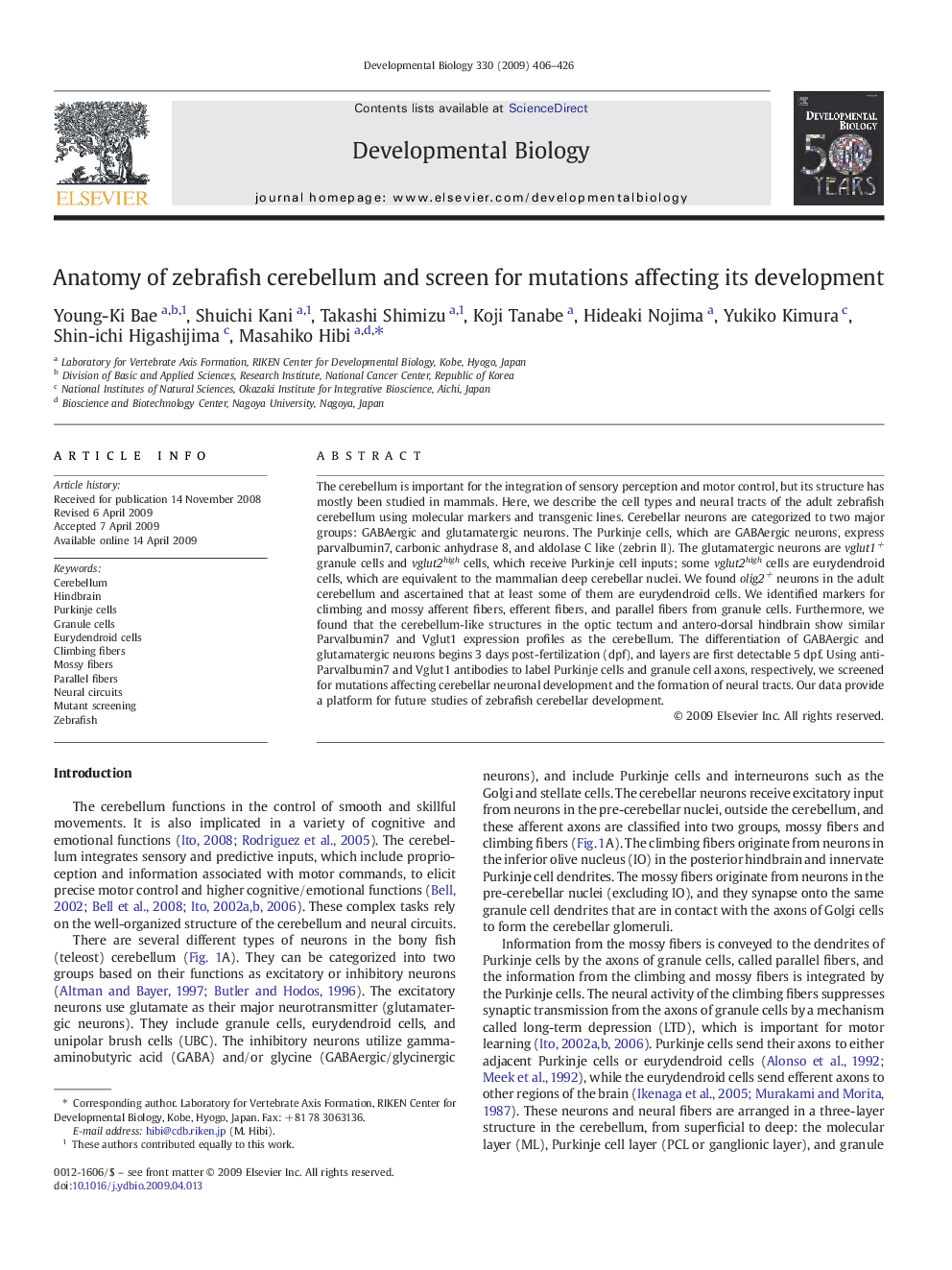| Article ID | Journal | Published Year | Pages | File Type |
|---|---|---|---|---|
| 2174147 | Developmental Biology | 2009 | 21 Pages |
The cerebellum is important for the integration of sensory perception and motor control, but its structure has mostly been studied in mammals. Here, we describe the cell types and neural tracts of the adult zebrafish cerebellum using molecular markers and transgenic lines. Cerebellar neurons are categorized to two major groups: GABAergic and glutamatergic neurons. The Purkinje cells, which are GABAergic neurons, express parvalbumin7, carbonic anhydrase 8, and aldolase C like (zebrin II). The glutamatergic neurons are vglut1+ granule cells and vglut2high cells, which receive Purkinje cell inputs; some vglut2high cells are eurydendroid cells, which are equivalent to the mammalian deep cerebellar nuclei. We found olig2+ neurons in the adult cerebellum and ascertained that at least some of them are eurydendroid cells. We identified markers for climbing and mossy afferent fibers, efferent fibers, and parallel fibers from granule cells. Furthermore, we found that the cerebellum-like structures in the optic tectum and antero-dorsal hindbrain show similar Parvalbumin7 and Vglut1 expression profiles as the cerebellum. The differentiation of GABAergic and glutamatergic neurons begins 3 days post-fertilization (dpf), and layers are first detectable 5 dpf. Using anti-Parvalbumin7 and Vglut1 antibodies to label Purkinje cells and granule cell axons, respectively, we screened for mutations affecting cerebellar neuronal development and the formation of neural tracts. Our data provide a platform for future studies of zebrafish cerebellar development.
